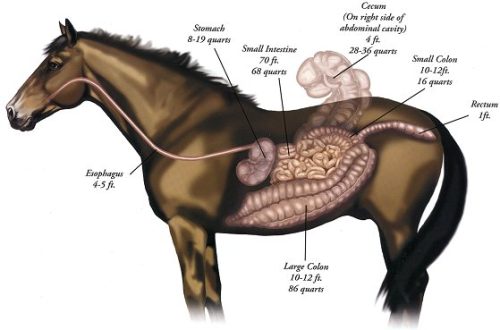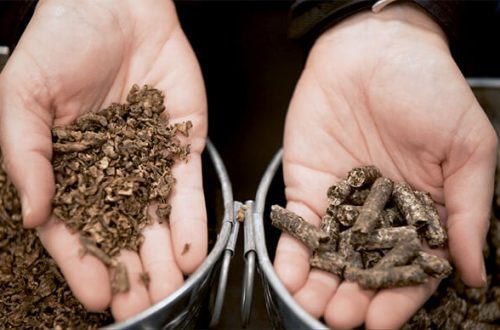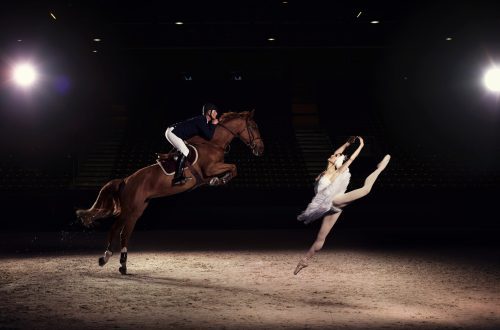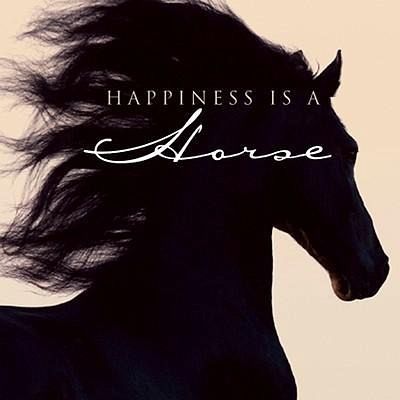
horse happiness
horse happiness
Let’s not deceive ourselves: without a horse there is no equestrian sport, without a horse we are just pedestrians … There are many of us, horsemen, and we are all different. One loves riding in the field, another dreams of sports victories, and the third wants to devote his life to developing the breed and raising foals. Carried away by our ideas and aspirations, we often forget that the horse has its own outlook on life. And if the happiness of a horse depends entirely on the people around it, then the happiness of the rider depends on the horses with whom he communicates.
Where do the “ears” grow from?
In those days when the horse was a faithful assistant to man and the basis of his well-being, his own well-being raised few questions. If the horse ceased to be useful or became dangerous, it was sent to the “heavenly pastures” with greater or lesser honors. So there was a selection according to the ability of the horse to live next to a person.
With the advent of cars, the number of horses has declined sharply. It has become too expensive to keep them. Horse owners sought to increase the efficiency of their enterprises, and this could be done in two ways:
● increasing the duration of life and work of animals with the help of the latest veterinary and sports developments;
● by equipping the stables so that caring for horses does not require hard, long and skilled labor. The fewer workers and the lighter their work, the lower the costs.
The stables familiar to us fully meet these requirements. The asphalt or concrete floor is easy to clean and disinfect, and the stall is sized to fit many horses in one building. Walkers replace lunging and walking in the levada. Animal behavior researchers call this stable architecture rigid architecture, and if we compare it with other human “inventions”, the modern conditions of the horse’s life are most reminiscent of imprisonment.
The tipping point
Although the attitude towards the horse in general has always been kinder than to other farm animals, for them, as well as for cows and chickens, the turning point was the publication in 1964 in the UK of Ruth Harrison’s book “Animal Machines” . It told about the work of large farms, where the animal was likened to a mechanism that processes one nutrient into another and does not experience any of the joys of a normal living being. Since the publication of the book and the heated discussions that it has generated, the science of animal welfare has been counting its existence.
Dreaming of a happy life for his horse, the owner faces a number of difficulties and contradictions. In reality, it is easier to change the daily life of the entire stable than to create the necessary conditions for one horse. But remember: demand creates supply, and the more people know about how a horse should live, the easier it will be for you to provide your pet with a quality of life at the modern level.
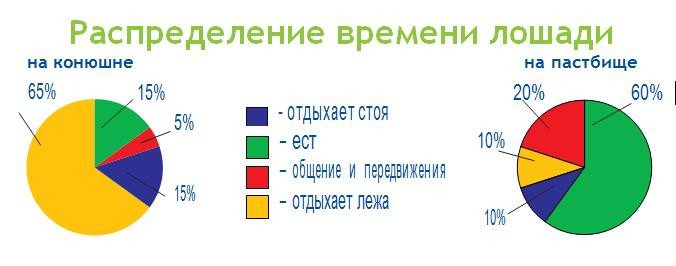
Mental well-being of the horse
The life of a horse in nature was harsh – often she had nowhere to hide from the cold rain or the scorching sun, and predators did not miss the opportunity to attack a foal or a mare that had strayed from the herd. However, horses have been adapting to these conditions for many millions of years. The inhabitants of our stables have not forgotten the experience of their ancestors.
To feel calm, they need to move a lot, graze most of the day and be surrounded by relatives who can raise the alarm in case of danger. Although today most horses do not die from the teeth of predators. Our horses remain cautious and attentive. When in a boring environment they have nothing to show the reactions that saved the lives of their ancestors for so many years, horses begin to actively seek entertainment. In a rigid architecture, entertainment is always inappropriate and often dangerous to the health of animals. However, the horse does not know what exactly harms it.
An unpredictable trainer and incomprehensible situations in the stable for the animal cause fear and suffering. Movement, proper feeding, communication with relatives, diversity and at the same time the predictability of the environment are the “whales” on which the mental well-being of the horse is based.
horse on a diet
Obesity-prone horses get fat eating only hay and grass. The easiest way to lose weight – starvation rations – is not good for a horse. Bored in an empty stall, the horse is nervous and angry, and not far from bad habits and new problems of the digestive system. The task of the horse owner is to spread small portions of roughage over as long a period as possible and force the horse to make every effort to obtain it. Instead of hay, you can give the horse granulated grass meal by pouring it into an equipball. The result is a minimum of calories, a maximum of benefits. Another option is to offer branches to the horse. Gnawing them is a long occupation, and if you scatter branches along the levada, the horse will have to collect them – move from place to place, head down. The psychological benefit is undeniable, because her behavior is close to natural for the species.
Finally, the third option is a special muzzle for horses on a diet. It has large holes for breathing and small ones so that the horse can drink and pluck a small amount of grass. Sentimental “don’t know” this method may seem cruel. From the point of view of the nature of the horse, it is much more humane than the rare feeding of a horse locked in an empty stall, because, walking around the pasture in a muzzle, he receives food constantly for a long time, albeit in very small portions.
Feeding
Food is more than just nutrients or treats. The entire digestive system of the horse is designed to receive food in small portions for most of the day. Watch the herd: horses graze 60% to 80% of the time they are in the pasture. With precise movements of the lips, they capture their favorite herb. The foals look at their mothers and eat what they eat. So the mare can show poisonous herbs to the foal. The calm behavior of the neighbors means the absence of danger for the horse. It turns out that grazing is both satisfying hunger, and training cubs, and maintaining ties in the herd, and a symbol of peace.
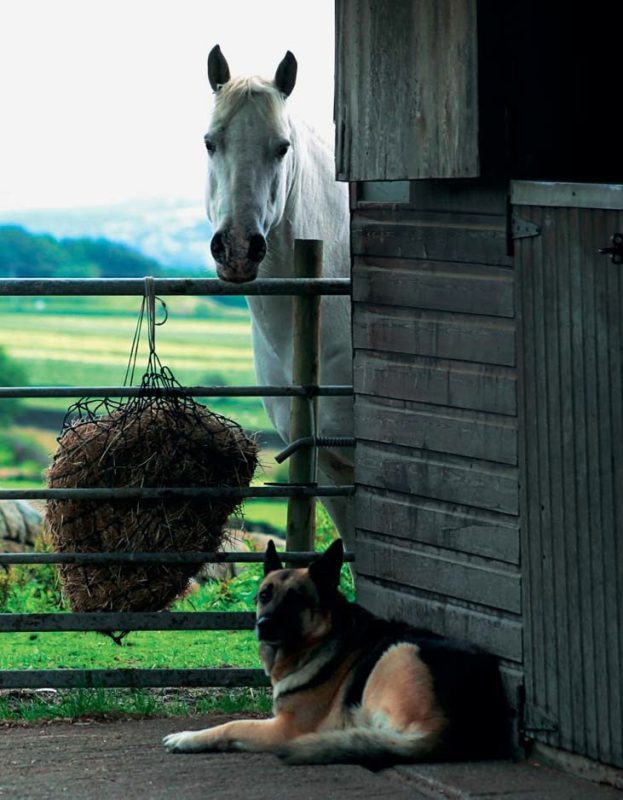
The easiest way to satisfy a horse’s need for constant access to food is to give it plenty of hay. Grain, compound feed and muesli also do not have to be completely poured into the feeder. To bring the horse’s feeding closer to natural, you can present part of the feed or the entire daily portion in equiball. You can hide vegetables in hay or straw. This is how you engage the horse’s normal behavior of looking for a particularly favorite food. Now feeding for the horse becomes not just the consumption of nutrients, but also entertainment, which is much more useful.
horse toys
Horses, like children, love to play. When the horse has played enough with one toy, for example, a leekit, take it away for a week or two, and give it an equipball instead. After a couple of weeks, you can change toys again and the horse will tackle the lick with the same enthusiasm as if it were new. Before you buy a set of toys for your horse, decide on your goals.
● To make the horse move more. An equiball is best for you – a ball with holes, from which food (oats, compound feed or granulated grass meal) is poured out in small portions when the horse rolls the ball on the ground. You can buy a ‘snack-a-ball’ or a ‘decahedron’.
● Borrow a horse that can’t move much. Horses like to toss and swing toys suspended from the ceiling. In Russia, they are usually called likits after the leading manufacturer (Likit). Licks of different colors and smells are inserted into the licks, sometimes a rubber ball is additionally suspended from them, and sometimes an equiball. Be careful not to put a lickit lick in the feeder, otherwise the horse will eat it in one day, which is dangerous for digestion.
The second option is the “wall ball” – an equipball fixed on the wall. A lickit-lick is inserted into it, and the horse does not roll the ball on the floor, but, licking the lickit fixed in it, spins it in a special stand. The wall ball does not require movement, but it keeps the horse’s attention for a long time.
● Give work to the growing foal. Foals and young horses do not like to stand in one place for a long time. Out of boredom, they begin to bite. While forbidding biting, allow the foal to bite and carry play balls (with handle and without filling) in his teeth – this way it is easier to prevent the development of many behavioral problems. Teach your horse to bring a toy on command, and you will make him the favorite of the whole stable.
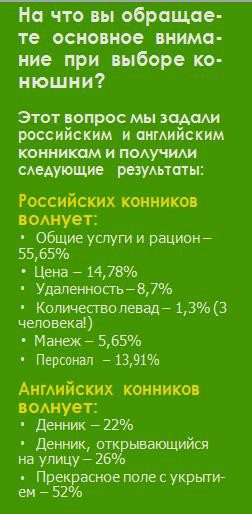
Before work
Stabled horses get excited when they go outside. The main problems for their owners are fearfulness and aggressiveness of animals. Owners of horses who live on the field usually have a different kind of difficulty: their horses behave in training too peacefully. In order for your pet to be bold, attentive and active at the same time, it must be taken from the pasture an hour before training. In the stall and under your brush, the horse will sleep, and will go to work with genuine enthusiasm.
Action
In the stall, the horses move very little. In addition, they do not like to lower their heads to the floor. Neighbors warning about the danger, so it becomes invisible. And if a predator (or even just a stranger) lurks behind the wall of the stall, then his horse will notice at the last moment. If happy pasture dwellers bow their heads to the grass for more than 14 hours a day, then the stable horse decides to do so only while eating hay from the floor. In training, the exercises of the horse are very intense, but the variety of movements is small. She still walks with her head up, and cannot lie, stretch, scratch …
Of course, today every enlightened equestrian takes the horse for a walk in the levada, and if the conditions of the stable allow, the walk lasts even the prescribed five hours. It’s better than nothing, but it’s less useful than it could be. Many horses walk along the levada along the fence for the first half an hour or an hour, and then freeze somewhere in one place and sleep standing up.
Levada stall
Increasingly, in Russian stables you can see “summer” stalls with an open upper door leaf that goes straight to the street. Such “apartments” allow the horse to breathe fresh air all day and observe the life of the horse yard. However, this is good only for lack of a better one. Such a stall seems cozy to us, and even cats and dogs are ready to agree with us, but not a horse! She is more comfortable in open space. The “know-how” of small horse yards in the West is levada stalls. These are small, the size of one and a half or two stalls, levadki, sometimes with an entrance to the stall. In such a left field, the horse spendsоmost of the day, and in the walking levada walks for several hours. This is especially useful when keeping stallions who cannot walk in a group and as a result spend the least time on the street.
A good levada for a horse is not a rectangle of ground trampled down or smacking with mud, on which animals walk between riding groups. Large levadas are well-groomed pastures, and small ones are “playgrounds”. The more distant from each other the landmarks in the levada (bushes, shelter, haystack, drinker, etc.), the more the horse will move and the more evenly use the territory provided to it. In a good levada there is also a sandy area where the horses like to wallow so much, and a post on which they can scratch themselves.
With what feeling do our horses look to the West?
If you came across this question on the Internet, how would you answer it?
Today, more and more Western horse owners prefer to keep their horses not in the stable, but on the field. In Russia, this method is called extensive. The field is usually surrounded by an electric fence, as it turns out to be cheaper, more reliable and safer for the horse. To the place where several large levadas converge, a water supply is brought (or water is brought several times a day). A shelter is placed on the field – a house with a roof and three walls. The shelter protects the horse from wind, rain and snow, and how much time to spend there, and how much to walk on the field, the horse decides. Russian equestrians often say that the extensive way of keeping in our climate is possible only for local breeds, but in Sweden it is supported by law, and I have seen many warm-blooded horses in blankets that feel great only sleeping in the stables and having fun in the day among the deep snowdrifts.
Communication
Horses are herd animals, and without relatives they do not feel safe. Loneliness leads to nervous tension and the development of bad habits. However, this is not the only thing. It is difficult for an ordinary equestrian to notice the difference, but it is there. If we talk about horses in “human” terms, then animals that have grown up without communication with relatives or in abnormal groups are emotionally, mentally and mentally underdeveloped!
Stallions have the hardest time in this respect. They are taken away from their mother earlier, and as soon as the colts begin to fight, they are no longer released together for a walk. At 5-6 years old, when the stallion becomes difficult to control or it turns out that he is unpromising for breeding, he is castrated. But without the experience of communication, he can no longer establish relations with either mares or geldings, and they do not accept him into their group.
This is a problem for horse breeding around the world, but in many countries in most cases it can be avoided. Stallions that are obviously uninteresting in breeding terms are castrated at the age of 2 weeks to six months. As a result, they walk longer with the mother mare, and then do not interrupt communication with relatives. The diversity of the environment ensures the mental and emotional development of the horse. Predictability is a feeling of self-confidence. The horse should have the opportunity to explore the world, and not accept the inevitability. If long walks, frequent feeding and communication with relatives have become the norm for your horse, then you can not worry about the variety and predictability of his everyday life.
Violations due to incorrect content
● Bad habits. The reasons for biting, pitching, circling on the stall, breaking walls – in the wrong weaning of the foal, in the monotonous conditions of childhood, in the constantly present stress factor (pain, fear, boredom, immobility), and only in a small number of horses – in the genetic predisposition. Proper content will help to avoid the emergence of bad habits.
● Injuries. Stabled horses get overexcited just by going out into the levada. They rush along it, destroying fences, getting tangled in ropes found no one knows where. If you leave the horse in the stall, he begins to “break” there too. Sometimes this takes the form of an obsessive stereotypy, expressed in self-mutilation.
● Digestive problems. Rare feeding and nervous tension lead to colic, stomach ulcers, poisoning by swallowed inedible objects and other problems of the digestive system. Pain contributes to the development of bad habits, and because of them it is even more difficult for a horse to return to a normal lifestyle, and therefore, to recover.
● Breathing problems. The tracheae of a horse are covered with cilia of epithelium, which carry dust and mucus from the lungs to the mouth. If the horse spends too much time with his head up, the cilia fail to do their job, the lungs are poorly cleansed and the development of respiratory diseases begins. This is a problem not only in ordinary stables with insufficient ventilation, but also in stables with “summer” stalls that open outward, since horses also prefer not to lower their heads to the ground in them.
Sofia Baskina
photo of Alexandra Kartasheva
The material is posted with the permission of the copyright holder – the magazine “My Horse” (“MyHorse“).
 GosigMus July 3 2017 city
GosigMus July 3 2017 cityGood article. Thank! Response
 Danon_Konnik July 4 2017 city
Danon_Konnik July 4 2017 cityGreat article! Answer



